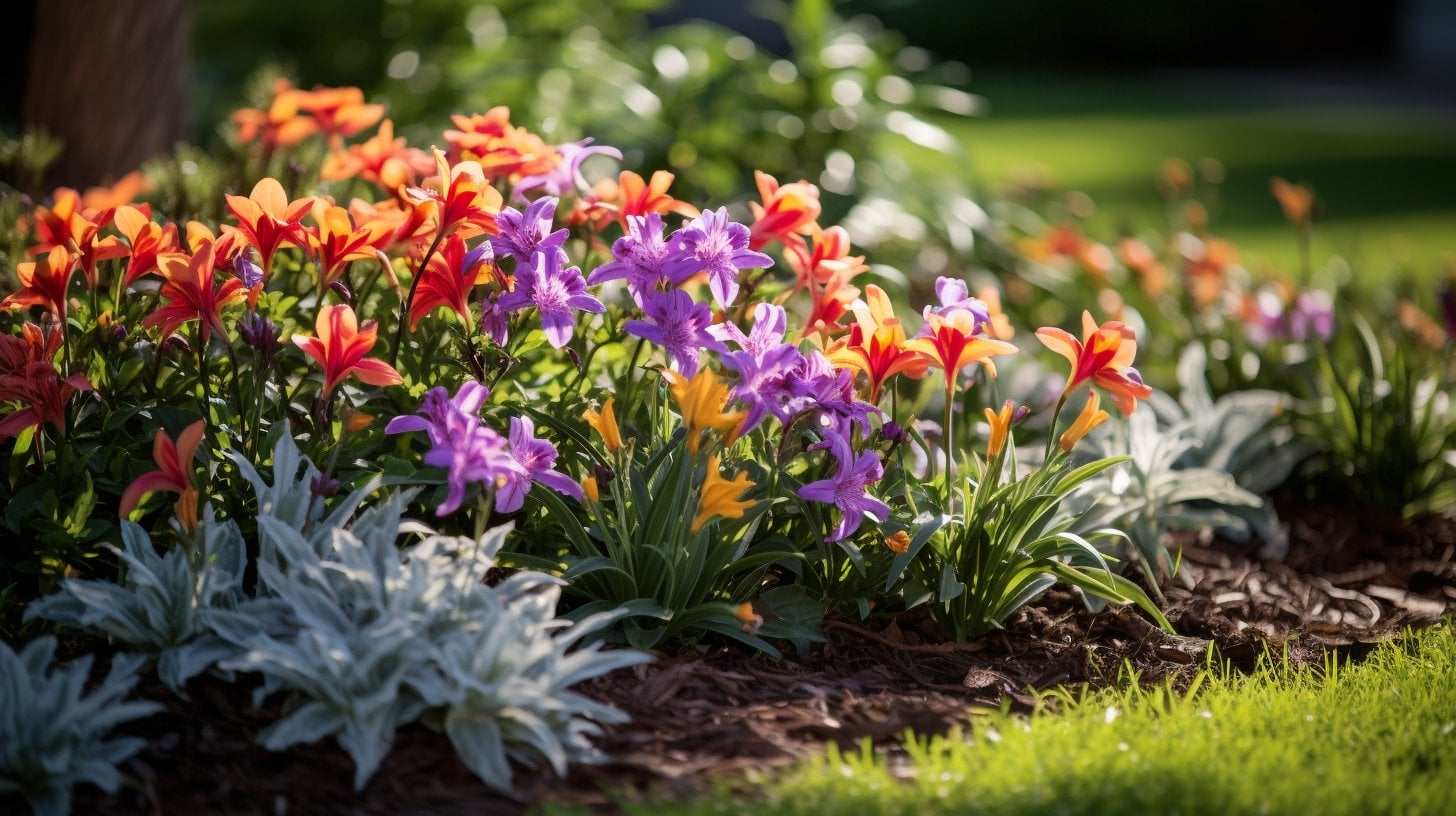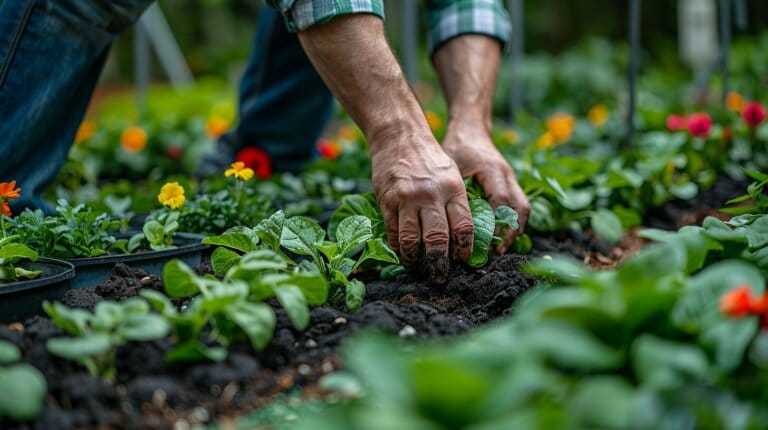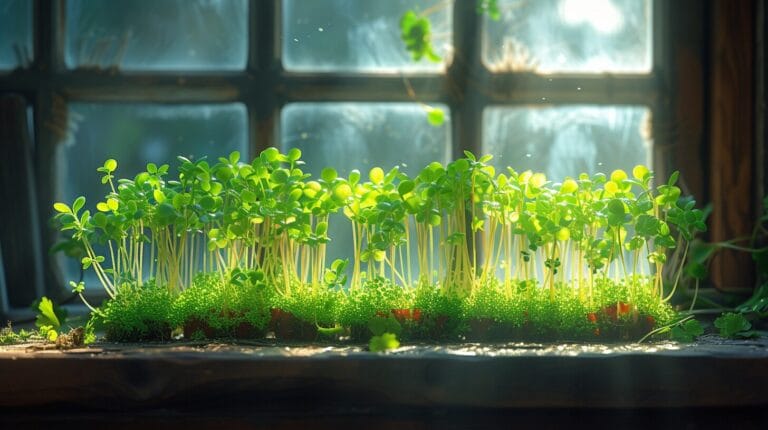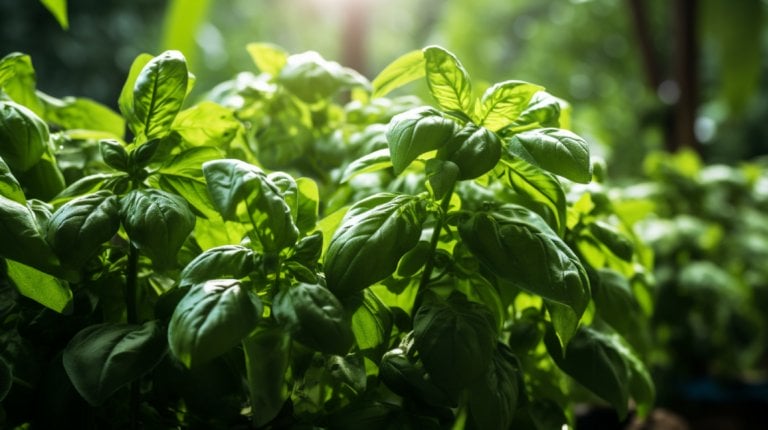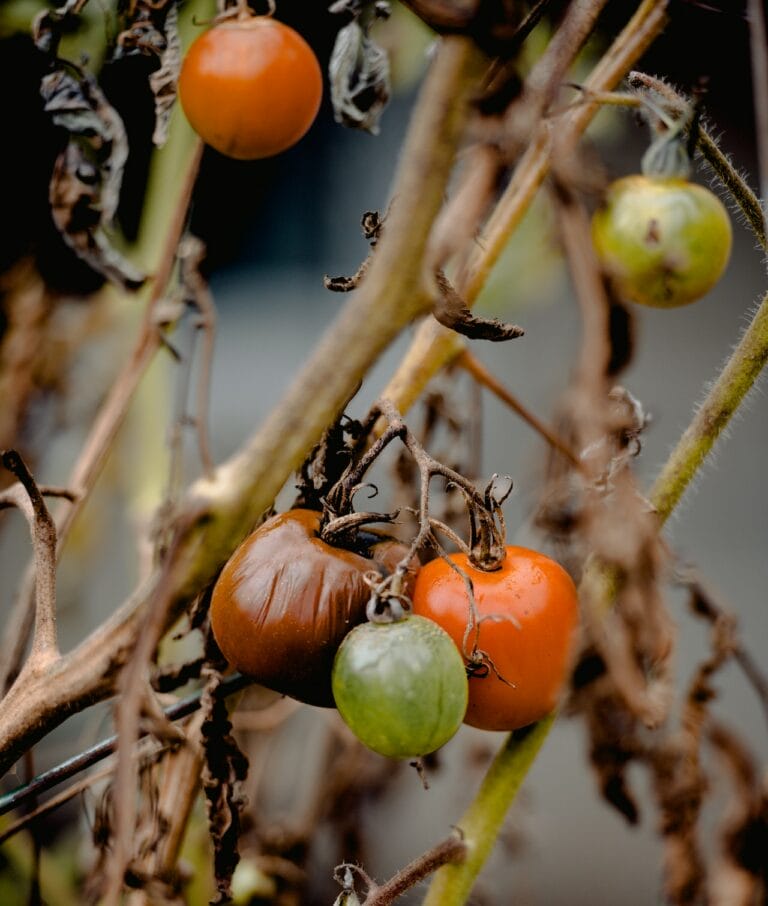How to Get Rid of Crabgrass in Flower Beds: Step-By-Step Guide
You’ve probably been in this predicament before – your gorgeous flower beds taken over by crabgrass. Annoying, isn’t it? Do not despair, I am here to provide some practical advice on how to successfully eliminate crabgrass from your flower gardens.
In this article, I’ll arm you with the best tools, techniques, and organic methods to tackle this unwelcome invader. We’ll also discuss preventative measures to keep it from coming back.
Ready to reclaim your garden? Let’s dive in.
Key Takeaways
- Accurate identification of crabgrass is crucial for applying specific control methods in flower beds.
- Manual pulling of this from the base is an effective method, but only if it is correctly differentiated from other plants.
- Organic methods such as using natural weed killers, mulching, regular watering, and fertilizing can help remove Digitaria without damaging the garden.
- Prevention and long-term management of crabgrass in gardens involve techniques like mulching, regular watering and fertilizing, strategic plant spacing, and the use of pre-emergence weed killers.
Identifying the Enemy: How to Recognize Crabgrass in Your Garden
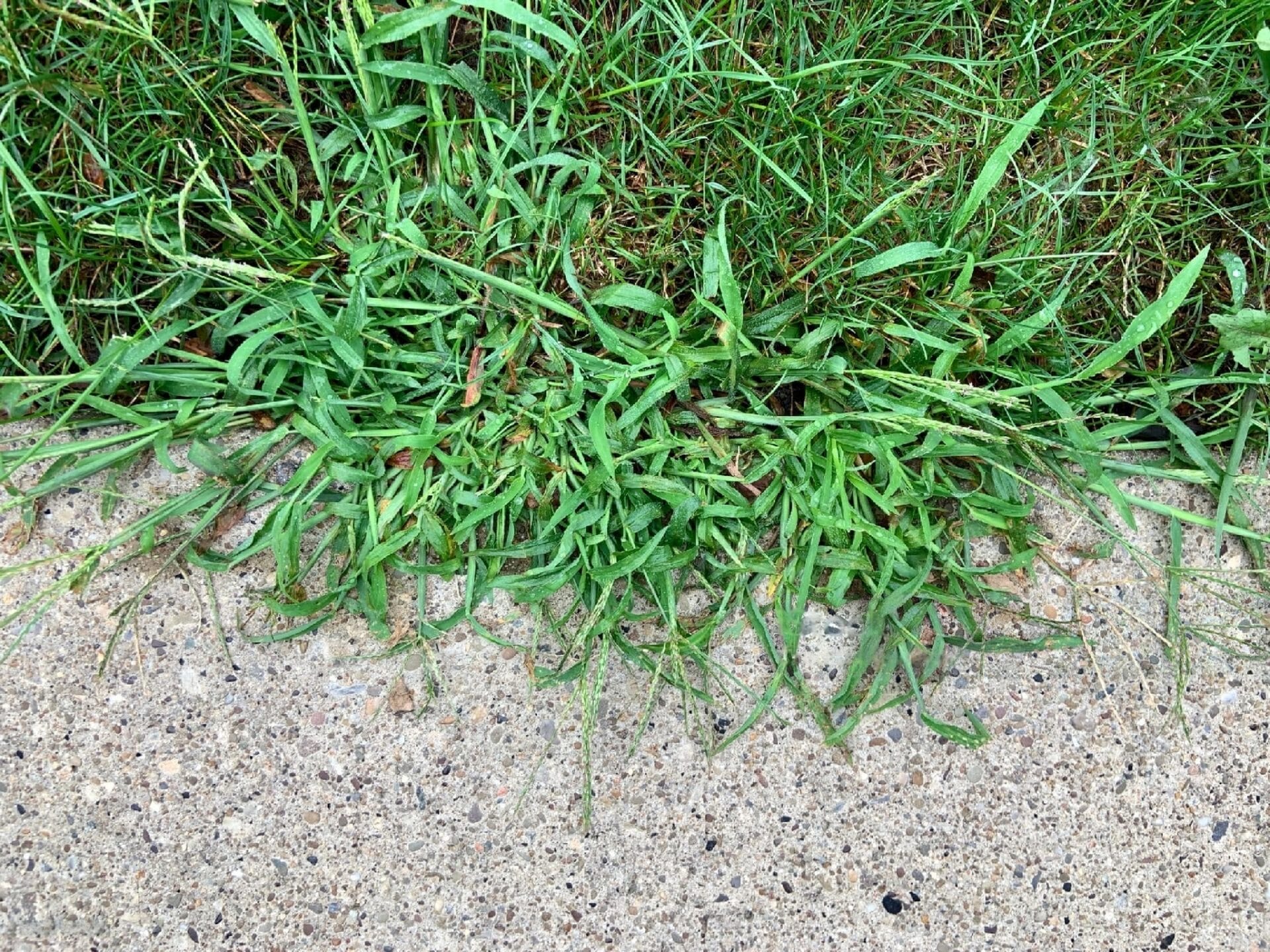
As a gardening enthusiast, I’ve had my fair share of battles with pesky invaders.
One of the most persistent offenders I’ve encountered is crabgrass, a common weed that can be tricky to identify.
Let’s dive into its unique characteristics, how to distinguish it from similar weeds, and understand its life cycle to help you spot and deal with this garden menace effectively.
The Unique Characteristics of Crabgrass
I’ve noticed that crabgrass has a unique ability to spread quickly and choke out other plants, making it a real nuisance in my flower garden. It’s important to recognize the unique characteristics of Digitaria to understand how to tackle it.
1. Crabgrass Plant: Despite its invasive nature, it’s quite a hardy plant. It thrives in hot, dry conditions where other plants struggle.
2. Crabgrass is an Annual: It sprouts in the spring, grows throughout the summer, and dies in the fall. But before it does, it drops thousands of seeds, perpetuating the cycle.
3. Hairy Crabgrass: This variety is especially tough. Its coarse, hairy leaves make it resistant to many common herbicides.
Understanding these traits helps me plan my attack against this persistent weed.
Differentiating Crabgrass from Similar Weeds
Differentiating crabgrass from other similar weeds isn’t always easy, but it’s crucial for effective lawn management.
I’ve learned that the key to differentiating it is paying close attention to its unique characteristics, such as its wide, flat blades and its tendency to grow in thick, low clusters.
Once you’ve accurately identified it, you can apply specific control methods. These can range from using pre-emergent herbicides for prevention to manually pulling out the weed from your lawn.
However, these methods only effectively work if you’ve correctly differentiated them from similar weeds. It’s a tricky task, but with some patience and keen observation, you’ll get the hang of it.
Understanding the Life Cycle of Crabgrass
Understanding the life cycle of crabgrass is my next step in learning how to manage this stubborn weed effectively. It’s crucial to note that this is an annual weed. This means it only has one growing season to wreak havoc in my garden.
Here are three key things to remember:
1. Seeding: Its seeds lie dormant throughout winter and start germinating in spring. That’s when they start their life cycle.
2. Growing Phase: The young ones grow rapidly in hot, dry summer conditions. It’s during this phase they’re most visible and disruptive.
3. Death and Re-seeding: At the end of the one growing season, the adult plants die off, but not before dropping more seeds for next year’s batch.
Understanding these stages will help me strategize my fight against this persistent intruder.
Gear Up: The Best Tools and Techniques for Removing Crabgrass
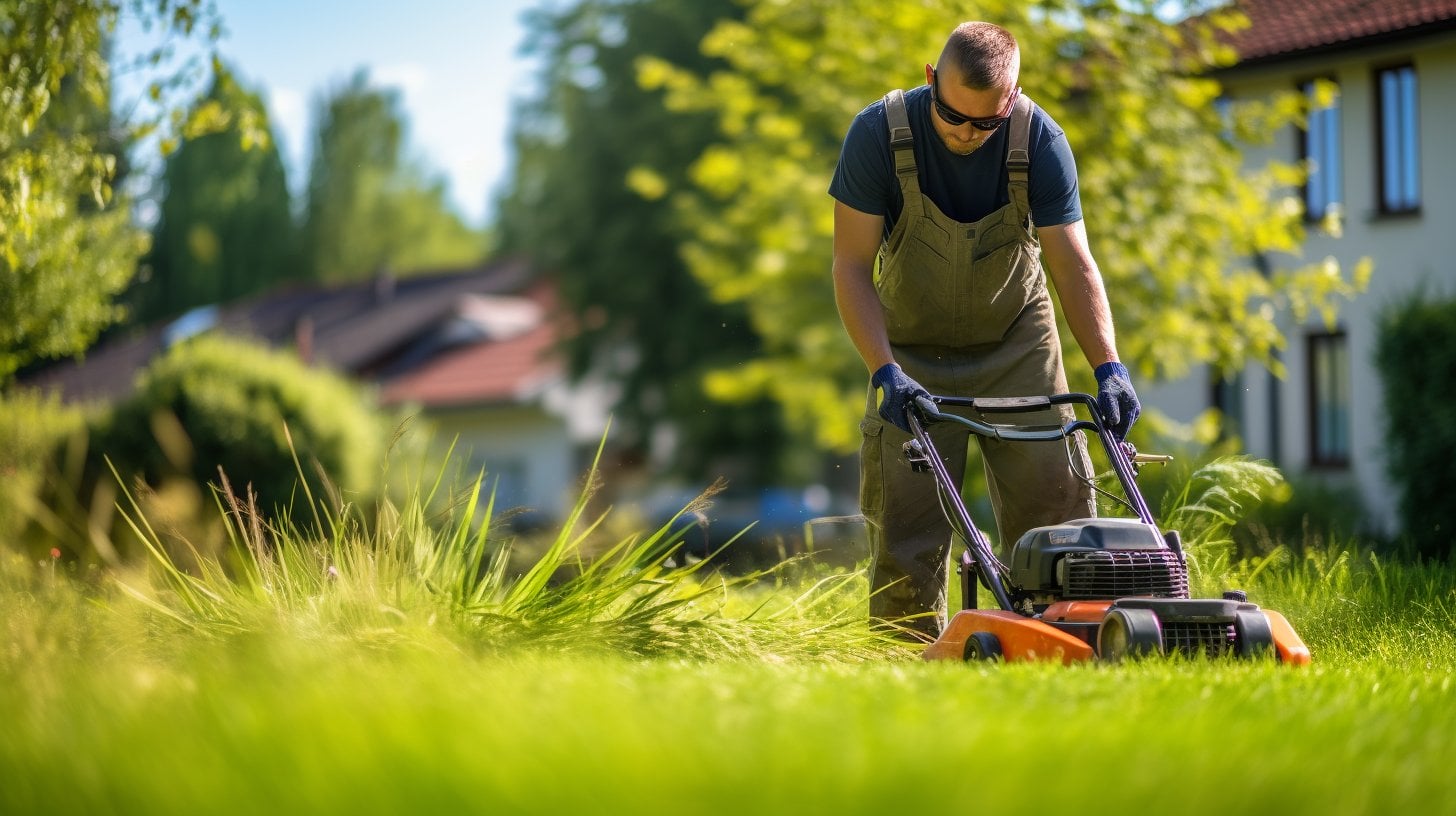
Now that we’ve identified our enemy, it’s time to arm ourselves with the best tools and techniques to fight back against crabgrass.
From manual tools to chemical herbicides, and even high-tech gadgets, I’ve got a lot to share.
Let’s dive into the nitty-gritty of effective removal.
Using Manual Tools for Effective Crabgrass Removal
I’ve found that using manual tools like a hand weeder or garden hoe can be quite effective for removing crabgrass from my flower garden. Pulling it by hand can feel tedious, but with the right approach, it’s a method that really works.
Here’s my three-step strategy for effective removal:
1. Identify the Invader: It has a distinctive look. Before pulling anything, make sure it’s the weed you’re after.
2. Use the Right Tools: A hand weeder is perfect for removing it, especially when the soil is moist.
3. Pull from the Base: Get a good grip and pull it from its base. This ensures you’re removing the whole plant, roots and all.
In my experience, manual tools are key to winning the battle against it.
The Pros and Cons of Using Chemical Herbicides
Despite the success I’ve had with manual tools, it’s worth noting that chemical herbicides also have their own set of pros and cons when it comes to weed control. As a crabgrass killer, a chemical herbicide can be more efficient than manual control methods, but there are drawbacks, too.
| Pros | Cons |
| Effective weed killer | Potential harm to the environment |
| Time-saving | Possible damage to other plants |
| Long-lasting effects | Health risks to humans and animals |
| Easy to use | Can be costly |
| Works on a variety of weeds | Resistance can develop over time |
Weighing the pros and cons of using chemical herbicides, I see that while they’re a potent weapon against it, I must consider their potential impact on the broader ecosystem and my own health.
Discover High-Tech Tools for Simplifying Weed Control
Shifting focus, let’s delve into the world of high-tech tools designed to simplify weed control. These ingenious gadgets can make crabgrass in your flower beds a thing of the past.
1. Weed Identification Apps: These clever applications can identify weeds by simply taking a picture. It’s a handy tool, especially when you’re dealing with a variety of weeds.
2. Robotic Lawn Mowers: These high-tech tools aren’t just for cutting grass. Some models can detect weeds, like crabgrass, and remove them efficiently.
3. Smart Sprinklers: These devices regulate water distribution, ensuring your flower beds are well-irrigated while deterring weed growth.
With these high-tech tools, weed control becomes a breeze. It’s time to bid farewell to it and hello to beautiful flower beds.
Organic Methods: How to Get Rid of Crabgrass in Flower Beds Without Harming Your Flower Buds
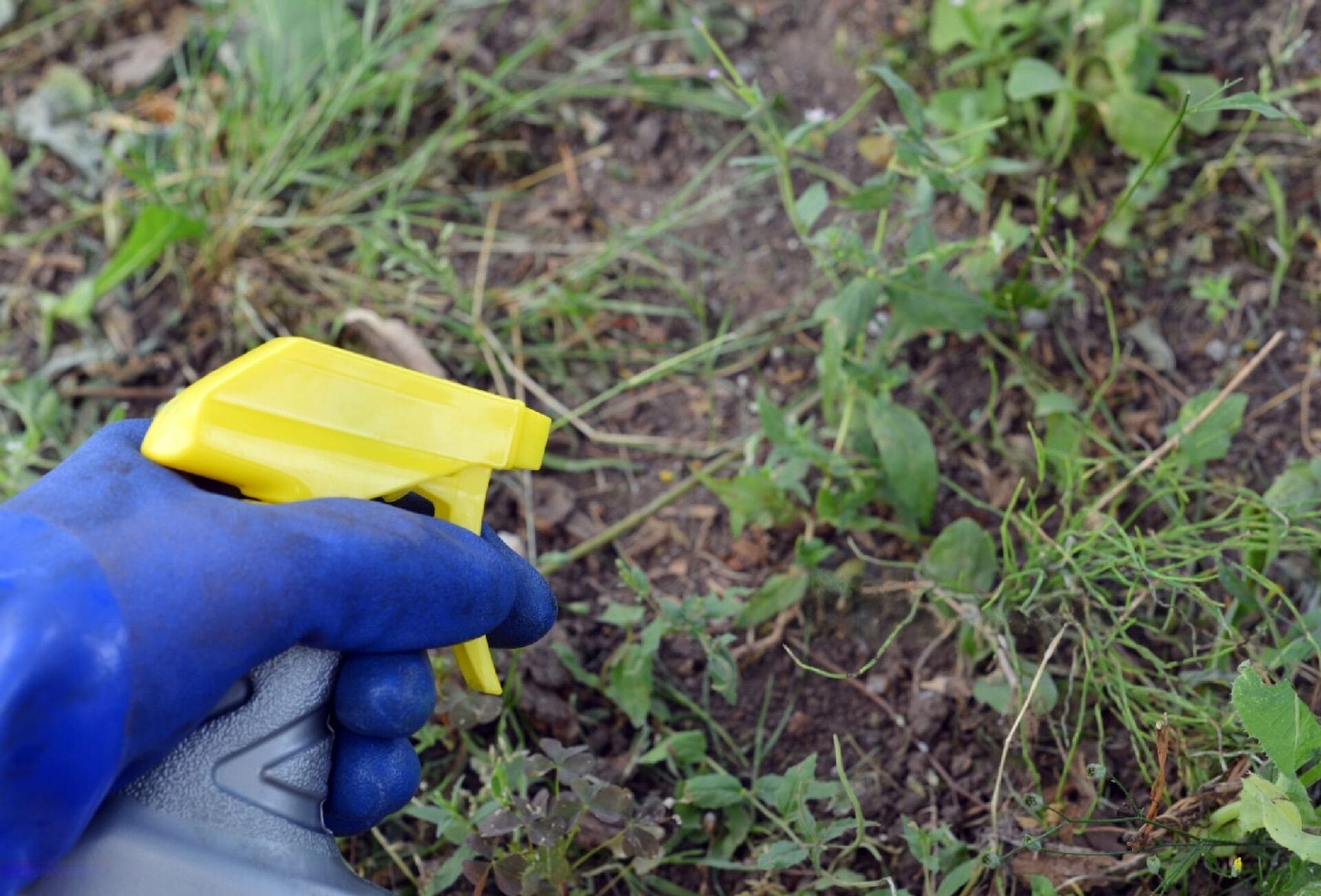
Now that we’ve covered the tools and techniques let’s delve into organic methods to eradicate crabgrass without damaging your precious flower buds.
I’m going to share some natural weedicides, discuss the importance of mulching, and explain how regular watering and fertilizing can maintain a healthy garden.
Trust me, it’s not as complex as it sounds!
Utilizing Natural Weed Killers: Vinegar, Salt, and More
I’ve found that natural weed killers like vinegar and salt can be incredibly effective in combating crabgrass in flower beds. This common weed can be a nuisance, but there’s no need to resort to harsh chemicals when there is natural farming available.
1. Vinegar: It’s not just for cooking. A good spritz of vinegar can kill it, especially if you catch it early. Be careful not to spray your flowers, though.
2. Salt: A little goes a long way. Sprinkle some on it and watch it wither away.
3. More: There are other methods, too, like boiling water or essential oils.
The Role of Mulching in Crabgrass Prevention
Mulching plays a significant role in preventing those pesky weeds from popping up in the first place. When I mulch, I’m not just beautifying my flower bed, I’m also implementing a key strategy in crabgrass prevention.
This acts as a barrier, making it tougher for its seeds to reach the soil, thus helping to prevent it from invading my beautiful garden. I’ve discovered that a layer of this around three inches thick is usually enough for effective control.
It’s also crucial to replenish it periodically, as it can break down over time. In my experience, it is a natural and efficient method to keep my flower bed free from it and other unwanted weeds.
Keeping Your Garden Healthy with Regular Watering and Fertilizing
In addition to mulching, it’s also important for me to regularly water and fertilize my garden to keep it healthy and vibrant. Keeping your garden healthy with regular watering and fertilizing not only promotes growth but also helps to eliminate crabgrass.
Here’s my 3-step routine:
1. Watering: I water my garden plants early in the morning to reduce evaporation.
2. Fertilizing: I use a balanced fertilizer to provide essential nutrients to my plants, strengthening them against pests.
3. Monitoring: I keep a close eye on lawns and gardens to spot any signs of crabgrass early.
Guard Your Turf: How to Prevent Grass from Growing Back in Your Flower Beds
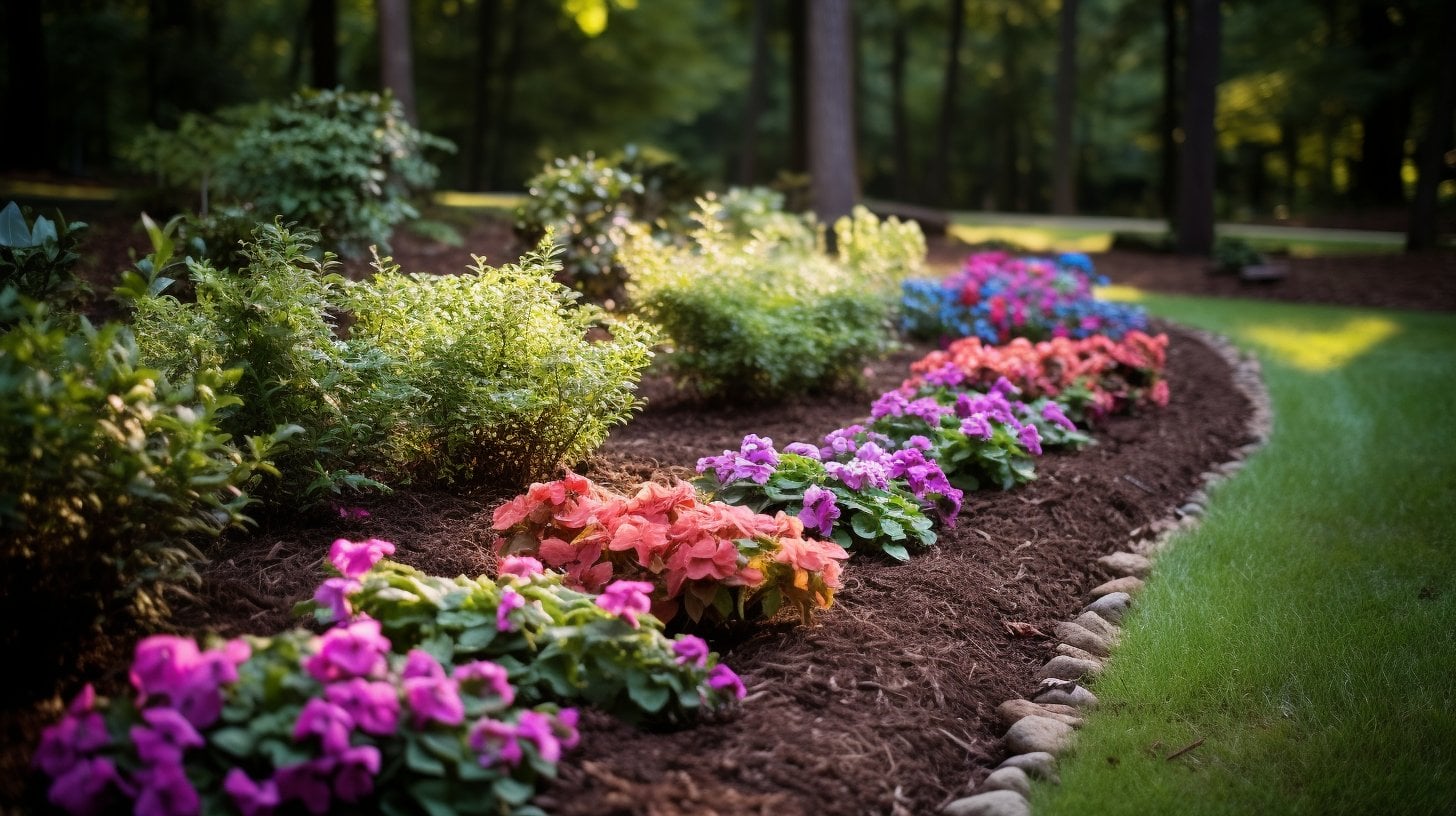
Now that we’ve tackled getting rid of crabgrass let’s move on to keeping it from coming back into our flower beds.
I’ll share some proven strategies, such as proper plant spacing, sunlight control, and the use of barrier systems.
We’ll also explore pre-emergent herbicides, a powerful tool in our fight against its resurgence.
Plant Spacing and Sunlight Control Strategies
I’ve found that properly spacing my plants and managing sunlight can help control crabgrass growth in my flower beds. Here are my top three plant spacing and sunlight control strategies to prevent grass:
1. Strategic Plant Spacing: I ensure to space my plants close enough so there’s less room for them to sneak in. This eliminates grass by denying it the space it needs to grow.
2. Sunlight Control: Crabgrass in the garden thrives in sunlight. I arrange tall plants in a way that they shade areas susceptible to them, thus minimizing their growth.
3. Mulching: I use mulch to cover the soil between plants in my flower beds and vegetable patches. The mulch blocks sunlight and prevents grass from sprouting.
These methods have helped me keep my garden crabgrass-free!
Implementing Barrier Systems to Keep Grass at Bay
Another effective tactic I’m using to maintain a grass-free garden is implementing various barrier systems. Not only do they keep crabgrass and other unwanted grass from your flower beds, but they also enhance your garden’s aesthetics.
I mainly use wood chips as a natural barrier. They’re not only effective at keeping the grass at bay but also enrich the soil as they decompose.
To remove grass from flower beds, I first dig out the grass and its roots, then lay down a thick layer of wood chips. This blocks sunlight and prevents the regrowth of grass.
With regular maintenance and replenishing of the wood chips, I’ve managed to keep my flower beds free from it and other invasive species. Implementing barrier systems to keep grass at bay is a practical, eco-friendly method.
The Power of Pre-Emergent Herbicides for Crabgrass Control
In addition to barrier systems, I’m finding pre-emergent herbicides to be a powerful ally in the battle against unwanted grass. These herbicides work by preventing crabgrass seeds from germinating, thus keeping crabgrass in your yard at bay.
Here’s a list of three things that I’ve learned about using it:
1. Timing is crucial. The herbicide must be applied before the seeds germinate, usually in early spring.
2. It’s essential to water your lawn after applying the herbicide. This helps the chemical to penetrate the soil and reach the seeds.
3. They are a great solution for large areas, but they’re not ideal for spot treatments. For isolated patches of crabgrass, I prefer to use post-emergent crabgrass preventers.
With these tools, I’m finally gaining control over crabgrass.
Mastering Crabgrass Management in Flower and Vegetable Gardens
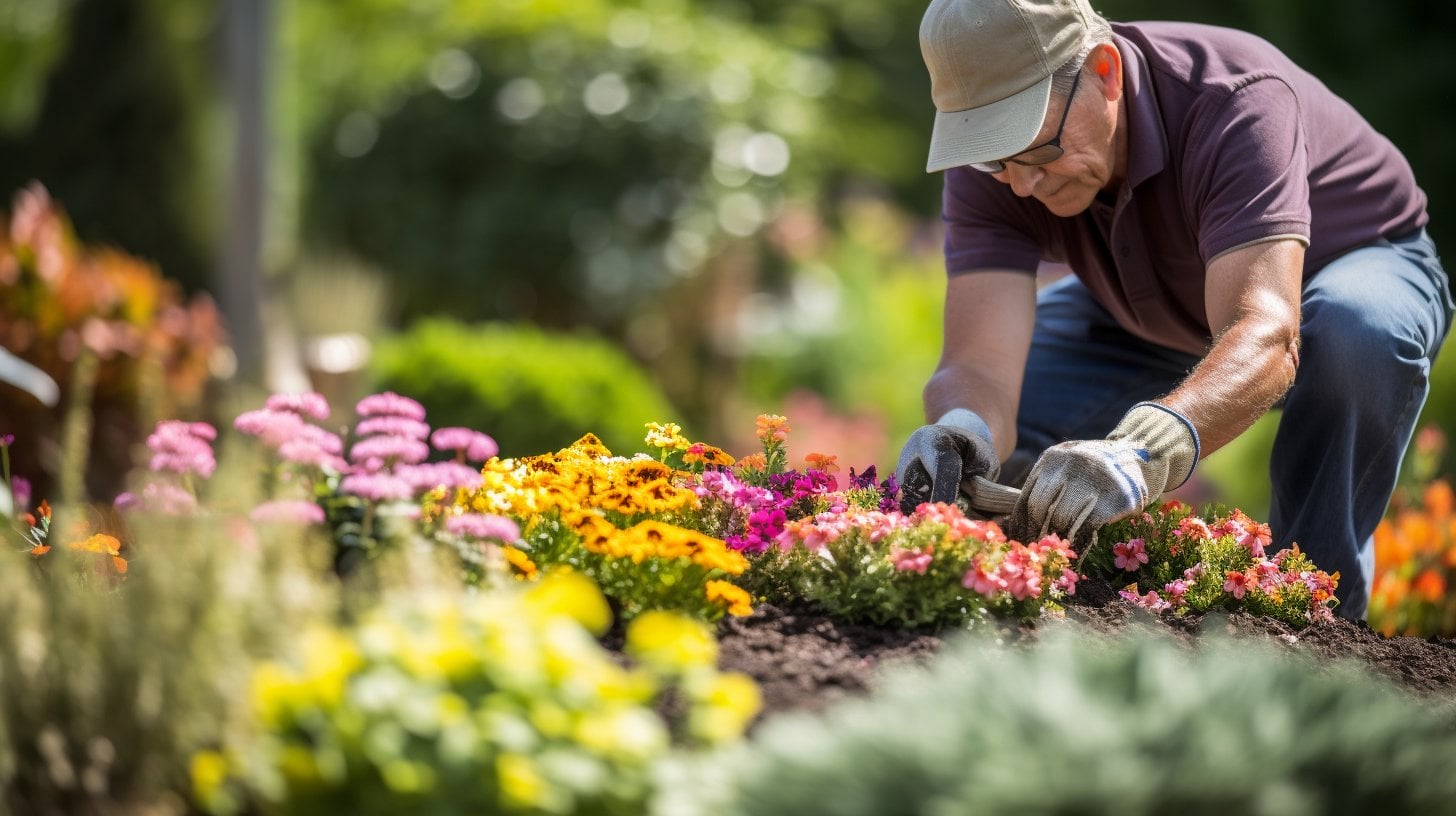
After tackling crabgrass in flower beds, I’ve turned my attention to mastering crabgrass management in both flower and vegetable patches.
It’s not just about removal but also preventing future invasions.
Let’s dive into tailoring strategies for different gardens, proactive maintenance steps, and common mistakes to avoid.
Tailoring Your Strategy for Different Types of Gardens
I’ve found that customizing my crabgrass removal strategy for each type of garden really makes a difference. Tailoring your strategy for different types of gardens isn’t just about aesthetics; it’s about ensuring the health of your plants.
Here’s my three-point plan:
1. Identify the type of garden bed: It’s crucial to know what you’re dealing with. Flower beds require a gentle approach compared to vegetable patches.
2. Select the right tools: Different types of gardens require different tools. For instance, a hand weeder works well for flower beds.
3. Choose the right time: It’s easier to eliminate crabgrass when it’s young and not yet deeply rooted.
Proactive Steps to Maintain a Flourishing, Weed-Free Garden
Maintaining a weed-free garden isn’t just about pulling up the nuisances; it’s about proactive measures that keep them from taking root in the first place. I’ve compiled a list of proactive steps to maintain a flourishing, weed-free garden, especially when you’re battling a persistent foe like crabgrass.
Here’s a handy table to guide you:
| Steps | Purpose | When to Use |
| Regular Weeding | Prevents weed spread | Weekly |
| Mulch Application | Suppresses weed growth | Spring/Summer |
| Use an Herbicide | Kills crabgrass | Early Spring |
| Plant Densely | Leaves no room for weeds | Planting Season |
| Water Deeply, Not Often | Encourages deep root growth | As Required |
These steps should keep your flower beds lush, healthy, and, most importantly, free from crabgrass and other weed invaders.
Mistakes to Avoid When Handling a Crabgrass Invasion
In tackling unwanted weeds, it’s crucial to realize the common mistakes many gardeners make, particularly when dealing with a tenacious invader like crabgrass. I’ve learned this the hard way during my own crabgrass invasion, and I want to share these lessons to help others avoid the same pitfalls.
So, here’s a list of three common mistakes to avoid when handling a crabgrass invasion:
1. Ignoring the problem: Crabgrass spreads rapidly. If you don’t act fast, you’ll struggle to get rid of crabgrass in your garden.
2. Not being thorough: It’s not enough to pull visible crabgrass. You’ve got to dig deep and get the roots, or it’ll just grow back.
3. Neglecting maintenance: Crabgrass in flower beds may be gone, but without proper care, it’ll return. Regular watering, mowing, and fertilizing are key.
After mastering the removal of crabgrass from your flower beds, discover how to get rid of foxtails without harming your lush lawn!
Frequently Asked Questions
What Other Types of Grass Can Invade Flower Beds Besides Crabgrass?
Besides crabgrass, various types of grass can invade flower beds. I’ve seen Bermuda grass, fescue, and ryegrass spread rapidly. Quackgrass and tall fescue are also common culprits. It’s crucial to identify them early.
How Does Crabgrass Affect the Growth and Health of My Flowers?
Crabgrass can really affect my flowers. It’s an aggressive weed that competes for nutrients, sunlight, and water. If left unchecked, it can stifle the growth of my flowers and even lead to their death.
Is Crabgrass Harmful to Pets or Children?
In my experience, crabgrass isn’t typically harmful to pets or children. However, if they’re allergic to grass, it might cause a reaction. Always watch for unusual behavior after they’ve been playing in the yard.
How Long Does It Typically Take to Completely Eradicate Crabgrass From a Flower Bed?
In my experience, it typically takes around two to four weeks to completely eliminate crabgrass from a flower bed. It’s highly dependent on the method used and how persistent you are with the treatment.
Can Crabgrass Infestation Be a Sign of Other Underlying Issues in My Garden?
Yes, crabgrass infestation can indicate other problems in your garden. It often suggests poor soil health or improper watering habits. So, it’s not just about killing crabgrass; it’s about improving overall garden care.
Conclusion
So, there you’ve got it! My proven steps to identify, combat, and prevent crabgrass in your flower beds.
Remember, it’s all about being persistent and using the right techniques. Choose natural farming to protect your blooms, and always keep an eye out for regrowth.
With these tips, you’ll master crabgrass management in no time.
Let’s declare war on crabgrass and maintain our beautiful flower and vegetable patch.
Happy gardening!

